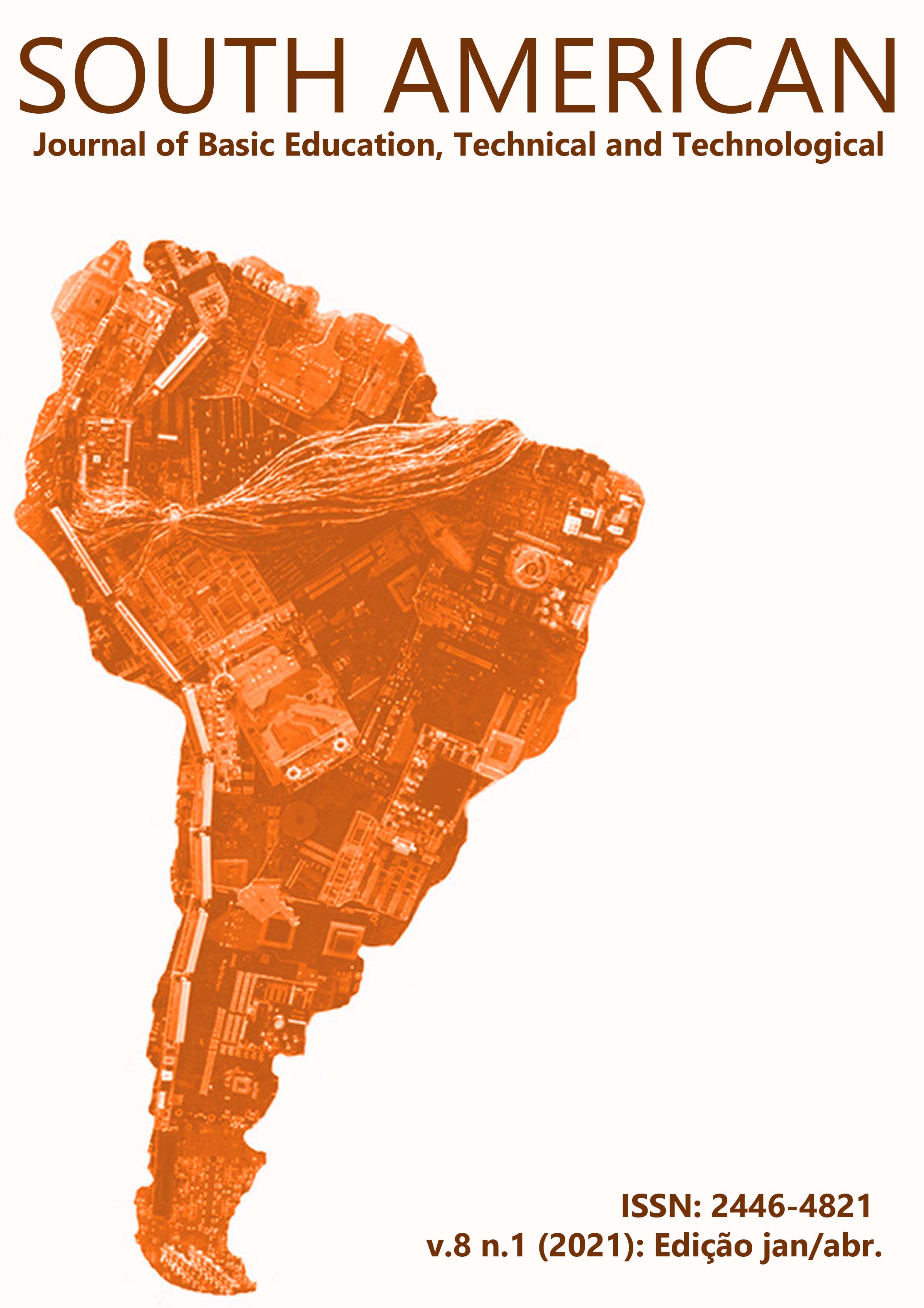ENSINO DE LÍNGUAS ESTRANGEIRAS E INTERCULTURALIDADE: UMA ANÁLISE DO LIVRO DIDÁTICO ÉCHO A1
an Analysis of the Écho A1 Textbook
Keywords:
Interculturalidade., Ensino de Língua Estrangeira., Ensino de Francês., Livro Didático.Abstract
Within the scope of the discussions on intercultural language teaching, this work aims to analyze the didactic-methodological proposal and two activities of the Écho A1 textbook, teaching French as a foreign language, with the purpose of discussing the adequacy of this material to the purposes of a intercultural language teaching. To this end, this paper presents the postulates of the Common European Framework of Reference for Languages (CEFR) and how they are aligned with the intercultural education proposal, to establish its main implications regarding the construction of textbooks. Starting from a qualitative methodology, based on the evidential paradigm, this work shows that, in alignment with the QECR's action/communicative proposal, the Écho A1 textbook brings activities that are consistent with an interculturally constructed teaching, seeking to overcome authoritarianism and literalness typical of this type of material.
Downloads
References
[2] GINZBURG, C. Mitos, emblemas, sinais: morfologia e história. São Paulo: Companhia das Letras, 1989.
[3] GALELLI, C. Y. A emergência do conceito da interculturalidade no ensino e aprendizagem de língua estrangeira. 17 de abril de 2015. 149f. Dissertação (Mestrado em Linguística e Língua Portuguesa) – Faculdade de Ciências e Letras, Universidade Estadual Paulista “Júlio de Mesquita Filho, Araraquara, 2015.
[4] LEFFA, V. J. O ensino de línguas estrangeiras no contexto nacional. Contexturas, APLIESP, n. 4, p. 13-24, 1999.
[5] MOZILLO, I.; MACHADO, M.G.S. O ensino da língua estrangeira e a competência intercultural. In: IV SENALE – Seminário Nacional sobre Linguagem e Ensino. Programação e resumo de trabalhos. Pelotas, 2005. Disponível em: http://www.leffa.pro.br/tela4/Textos/Textos/Anais/SENALE_IV/IV_SENALE/Isabella_Mozzillo_e_Maristela_Machado.htm. Acesso em: 20 fev. 2020.
[6] SHIGUNOV NETO, A.; MACIEL, L. S. B. O ensino jesuítico no período colonial brasileiro: algumas discussões. Educação em revista [online], Belo Horizonte, n. 31, p.169-189, 2008. Disponível em: https://www.scielo.br/scielo.php?script=sci_abstract&pid=S0104-40602008000100011&lng=en&nrm=iso&tlng=pt. Acesso em: 07 ago. 2019.
[7] FARACO, C. A. História sociopolítica da língua portuguesa. São Paulo: Parábola Editorial, 2016.
[8] ARRUDA, L. Um breve panorama histórico do ensino de FLE no Brasil: origens, contatos culturais e evoluções políticas. Cadernos Neolatinos, Rio de Janeiro, v. 1, n. 2, p. 1-13, 2016. Disponível em: https://revistas.ufrj.br/index.php/cn/article/view/9723. Acesso em: 02 ago. 2019.
[9] BRASIL. Secretaria de Educação Fundamental. Parâmetros curriculares nacionais: terceiro e quarto ciclos do ensino fundamental: Língua Portuguesa. Secretaria de Educação Fundamental. Brasília: MEC/SEF, 1998.
[10] BRASIL. Ministério da Educação. Base Nacional Comum Curricular. Brasília: MEC, 2018. Disponível em: http://basenacionalcomum.mec.gov.br/. Acesso em: 22 ago. 19.
[11] CONSELHO DA EUROPA, Quadro Comum Europeu de Referência para as línguas: aprendizagem, ensino, avaliação. Portugal: ASA, 2001. Disponível em: http://area.dge.mec.pt/gramatica/Quadro_Europeu_total.pdf. Acesso em: 07 ago. 2019.
[12] VILAÇA, M. L. C. Conhecendo o quadro comum europeu de referência. Revista eletrônica do Instituto de Humanidades, Rio de Janeiro, v. V, n. XVII, p. 1-15, 2006. Disponível em: http://publicacoes.unigranrio.edu.br/index.php/reihm/article/view/501. Acesso em: 08 ago. 2019.
[13] RAJAGAPOLAN, K. Por uma linguística crítica: linguagem e identidade e a questão ética. São Paulo: Parábola Editorial, 2003.
[14] WALSH, C. Interculturalidad, estado, sociedad: Luchas (de)coloniales de nuestra época. Quito: Universidad Andina Simón Bolívar/Ediciones Abya-Yala, 2009.
[15] BULZACCHELLI, J. F. S. Conteúdos culturais em um livro didático de espanhol como língua estrangeira: uma discussão em uma perspectiva intercultural e uma proposta didática. 23 de abril de 2015. 144f. Dissertação (Mestrado em Ensino na Educação Básica) – Universidade Federal de Goiás, Goiânia, 2015.
[16] VILAÇA, M. L. C. O material didático no ensino de língua estrangeira: definições, modalidades e papéis. Revista eletrônica do Instituto de Humanidades, Rio de Janeiro, v. VIII, n. XXX, p. 1-14, 2009. Disponível em: http://publicacoes.unigranrio.edu.br/index.php/reihm/article/view/653/538. Acesso em: 07 ago. 2020.
[17] SILVA, R. A. As tirinhas no livro didático: usos e abusos. 2011. 94f. Dissertação (Mestrado em Letras: Linguagem e Identidade) – Universidade Federal do Acre, Rio Branco, 2011.
[18] TILIO, R. O papel do livro didático no ensino de língua estrangeira. Revista eletrônica do Instituto de Humanidades, Rio de Janeiro, v. VII, n. XXVI, p. 117-144, 2008.
[19] KRAMSCH, C. The cultural discourse of foreign language textbooks. In: SINGERMAN, A. (Ed.). Toward a new integration of language and culture. Middlebury, VT: Northeast Conference on the Teaching of Foreign Languages, 1988, p. 63-88.
[20] GIRARDET, J.; PÉCHEUR, J. Écho A1: méthode de français. Itália: Clé International, 2012.
[21] OLIVEIRA-CODINHOTO, G. A imagem da escrita e o papel das tecnologias digitais de informação e comunicação em textos de professores em formação na Amazônia Sul-Ocidental. In: KOMESU, F.; ASSIS, J. A. (Orgs.). Ensaios sobre a escrita acadêmica. Volume 1. Belo Horizonte: Editora PUC Minas, 2019, p. 124-138.
[22] KRESS, G.; VAN LEEUWEN, T. Multimodal discourse: the modes and media of contemporary communication. England: Hodder Arnold Publication, 2001.
[23] KOMESU, F. Letramentos acadêmicos e multimodalidade em contexto de EaD semipresencial. SCRIPTA, Belo Horizonte, v. 16, n. 30, p. 75-90, 2012. Disponível em: http://periodicos.pucminas.br/index.php/scripta/article/view/4241. Acesso em 15 abr. 2020.










